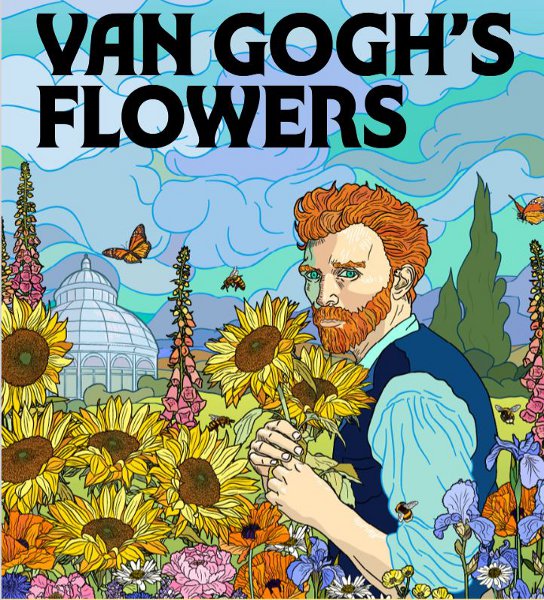
image courtesy the New York Botanical Garden
.
All content included on this site such as text, graphics and images is protected by U.S and international copyright law.
The compilation of all content on this site is the exclusive property of the site copyright holder.
Van Gogh's Flowers at the New York Botanical Garden
Part three: Color and Combinations
Media preview on Tuesday, 20 May 2025,
Opening to the public on 24 May 2025
I'm off! Today I will be at the New York Botanical Garden for the media preview of Van Gogh's Flowers. Perfect weather. Crummy traffic. Well worth the drive. installations in the conservatory and out on the grounds . . . so much to see.

image courtesy the New York Botanical Garden
Van Gogh was intrigued with color, fascinated with its effects. He explored color theory. He used complementary colors (colors opposite each other on the color wheel) intensifying each other to create contrast and visual interest, and the use of color to evoke emotion and create depth. He liked to paint with a range of yellows : yellow ocher, chrome yellow, cadmium yellow, chrome orange, vermilion, and contrast with their complements : Prussian blue, ultramarine, emerald green.
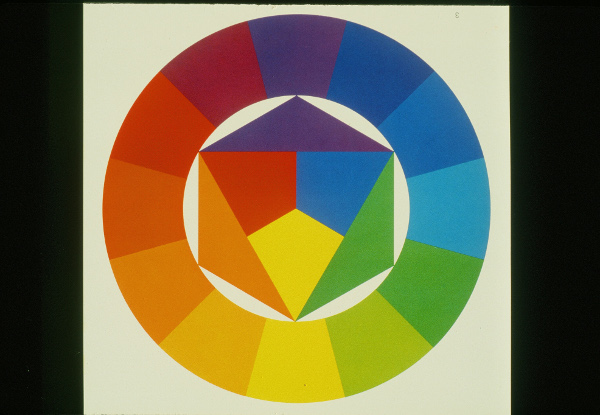
The color wheel readily displays which colors are opposite each other - red to green
for example. And which are adjacent to each other - the quadrant from yellow to red.
The Enid Haupt Conservatory's Palm Court with a pool has van Gogh's bearded irises.
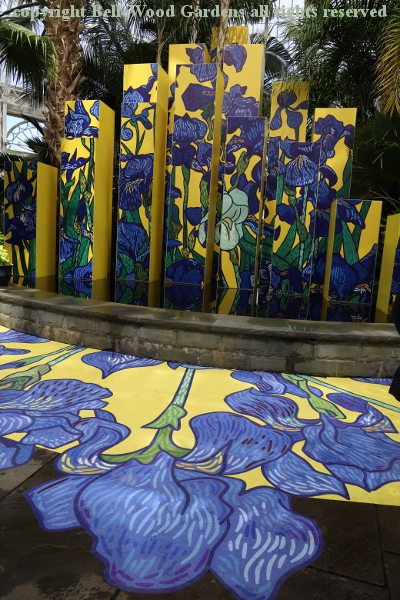
The Seasonal Display Gallery has four metal sculptures, bouquets of flowers, based on van Gogh paintings.
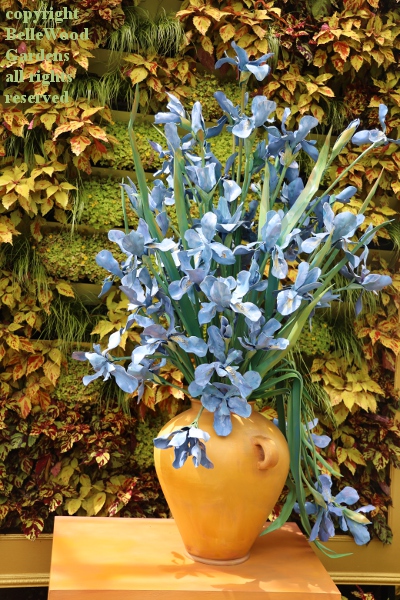 .
.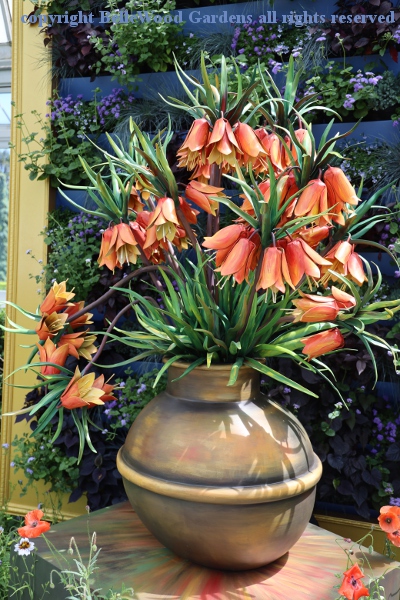
Above left, sculpture of a vase of bearded iris. Above right, crown imperial fritillaria in a copper vase.
Below left, oleanders in a painted pitcher. Below right, roses in a green vase, complete with fallen leaves.
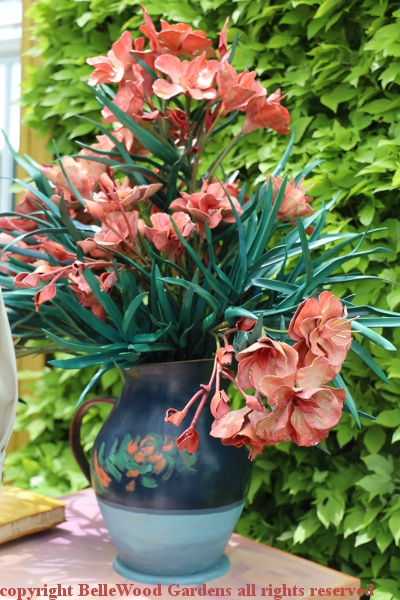 .
.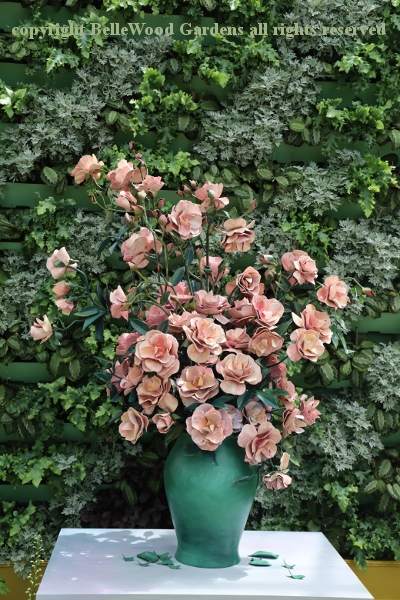
Painted over a century ago, the purple iris in his painting have faded to blue, his pink roses are now white. Why?
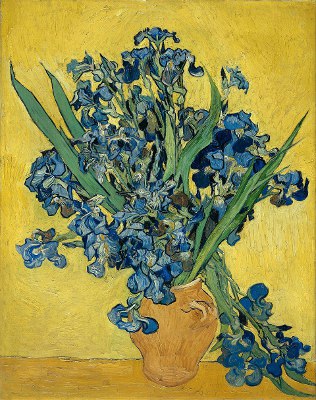 .
.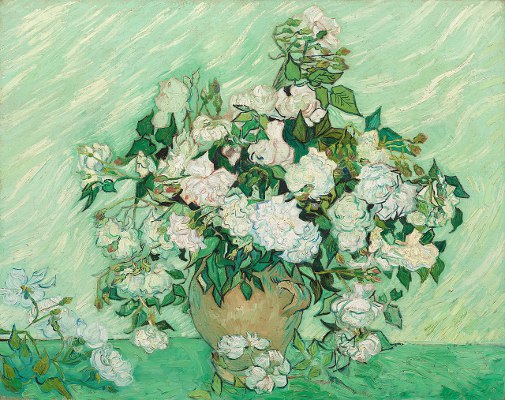
copyright free images from Wiki Commons
He used red pigments such as cochineal derived from scale insects. A vibrant red, it is known for poor fastness to light.
.
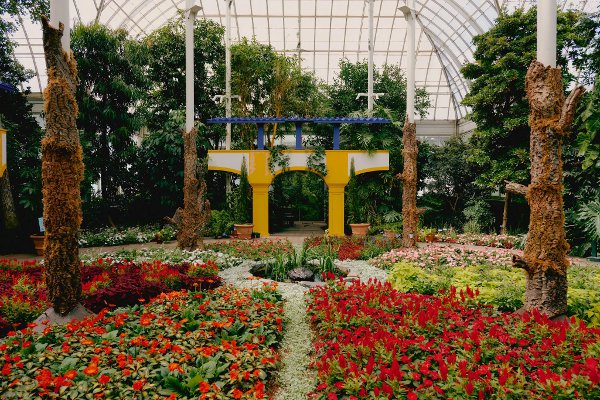
image courtesy the New York Botanical Garden all rights reserved
A color wheel created with plants. Where paths would have been gravel, here they are created with silver leaved plants.
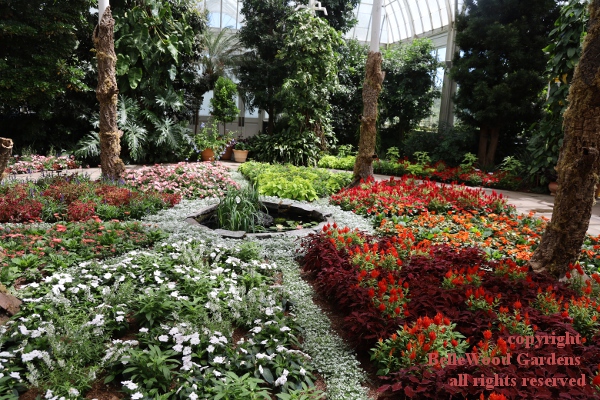 .
.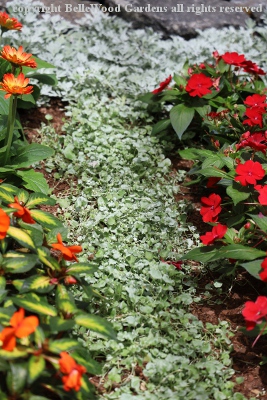
.
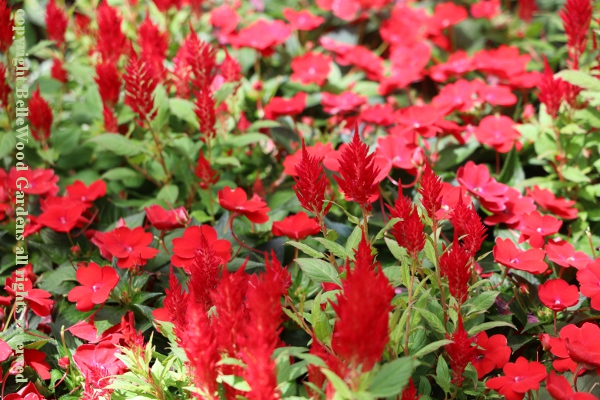
Red impatiens and celosia. Mix red with white to create pink. Pink impatiens and gerbera.
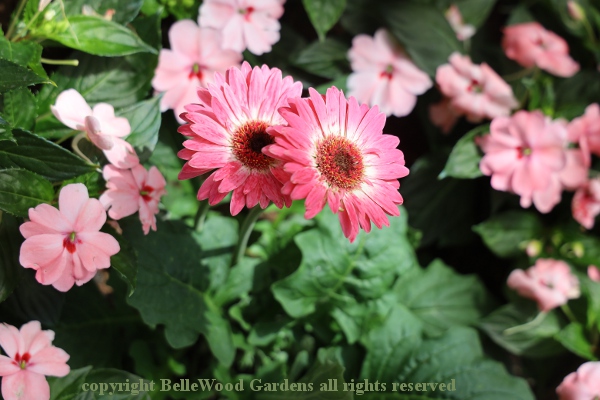
Red with yellow becomes orange. Gerbera and variegated New Guinea impatiens.
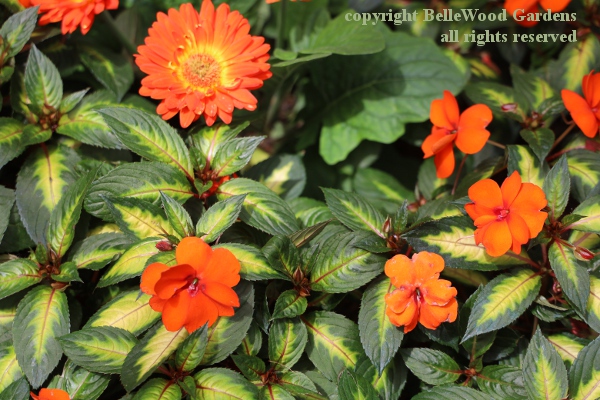
Options and possibilities. Coleus with chartreuse leaves and magenta markings.
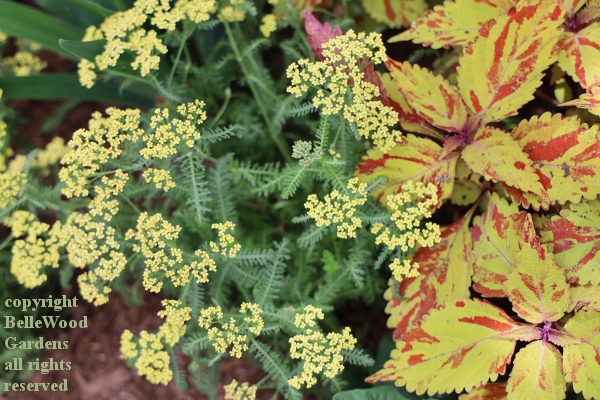
Paired with soft yellow achillea for one look, orange celosia for something different.
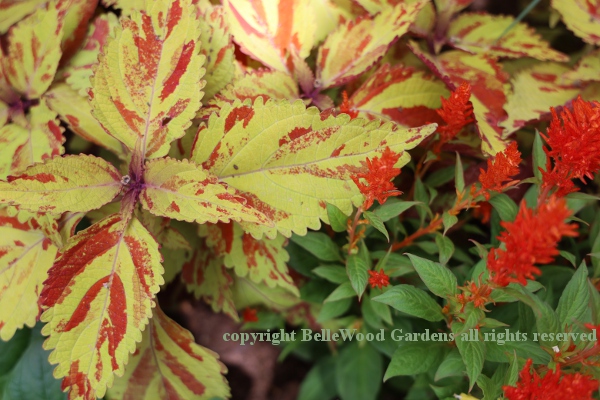
In a letter to his brother Theo, written on Monday, 31 July 1882, Vincent writes, " Absolute black doesn’t in fact occur. Like white, however, it’s present in almost every colour and forms the endless variety of greys — distinct in tone and strength. So that in nature one in fact sees nothing but these tones or strengths. The fundamental colours are red, yellow, blue, composite orange, green, purple. From these are obtained the endless variations of grey by adding black and some white — red-grey, yellow-grey, blue-grey, green-grey, orange-grey, violet-grey. It’s impossible to say how many different green-greys there are for example — the variation is infinite."
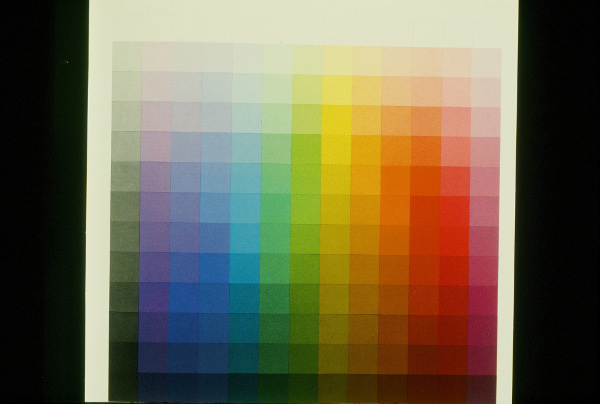
Tints and shades explore adjacent columns of colors, tinted from black at the bottom
to white at the top. But the apparent intensity appears to be more of a variable, as
yellow seems brighter, even with more white, than do colors such as purple and blue.
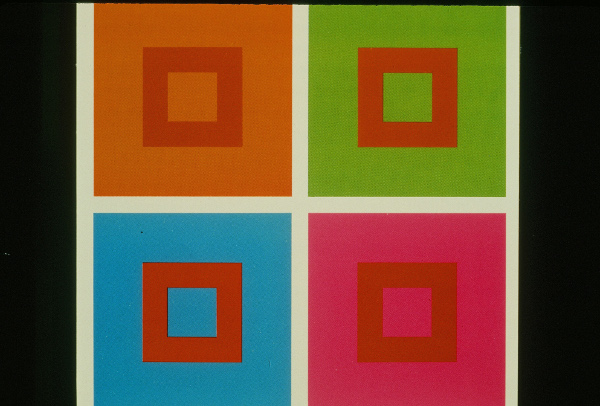
How colors influence each other is also fascinating. The red square is the same hue in each
of these quadrants. They look very different with opposite or adjacent background color.
If you enjoyed this entry, perhaps you'll also enjoy my other entries
van Gogh's sunflowers, van Gogh's bearded irises. and Part Four: Miscellany
And then, having attracted your attention, I hope you decide to come enjoy the exhibition for yourself.
The upcoming exhibition for Van Gogh’s Flowers will run from May 24 through October 26, 2025. Visitors will revel in the beauty of the natural world that inspired Vincent van Gogh, one of the world’s most revered artists. You’ve seen the paintings, now see them come to life at the Garden. NYBG will present botanical displays along with contemporary art by Lee Baker and Catherine Borowski of Graphic Rewilding, sculptor Amie Jacobsen, and immersive artist Cyril Lancelin, including a field of real and sculptural sunflowers in which visitors can wander through a sea of yellow blooms. Complementary daytime programming on select dates during Van Gogh’s Flowers will offer engaging, interactive experiences, such as “Plein Air Drop-In and Paint,” that spark NYBG visitors’ creativity, offer respite from City life, and inspire them to see nature as Van Gogh did.
Tickets may be purchased at ticketingsupport@nybg.org or telephone 718.817.8716, 10 a.m.–6 p.m.
An All-Garden Pass provides daytime entry to the Enid A. Haupt Conservatory, NYBG's outdoor gardens and collections, and public programs on the day of your visit.
If you have any comments or questions, you can e-mail me: jgglatt@gmail.com
Back to May
Back to the main Diary Page